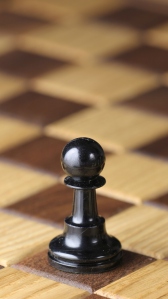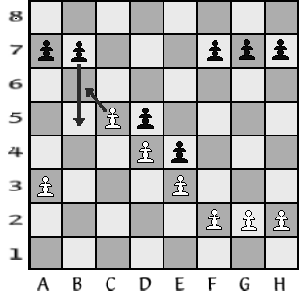Finally, we get to cover the last chess piece in this ongoing chess tutorial, the Pawn.
Pawns are sometimes considered the red shirts of chess but are often underestimated.
When pawns reach the last rank on the board they can be promoted to whatever piece you wish except for the King. Most go with the queen for obvious reasons.
They are worth one point, however due to their unique nature pawns can either be very effective or worthless. A common strategy is the powerful “pawn chain” which links several pawns diagonal of each other so that the one in the back protects the next pawn, which in turn protects the next one, which in turn prot…you get the idea. Seeing as how they are low man on the totem pole, your opponent will be less likely to sacrifice a higher piece for a lowly pawn unless absolutely necessary. A good pawn structure can be the key to victory. Pawns that are isolated require another higher ranking piece to protect it, which in turn traps that piece into serving as a babysitter and in most cases useful for very little else. Pawns become increasingly more valuable the closer they get to promoting, especially if there is no enemy pawn in front of it to block the pawn’s advance.
There is another rule that they follow called “En Passant” which is a little more advanced and not often seen. En Passant is French for “In Passing”. When a pawn moves two spaces on its first turn and passes the diagonal square that an enemy pawn is attacking, the enemy pawn may, on its next turn, move diagonal and take it, even though the pawn is now beside the enemy pawn.
We’ll discuss strategies among other things next time around. Stay tuned!
Click Here to return to the main article.
—



